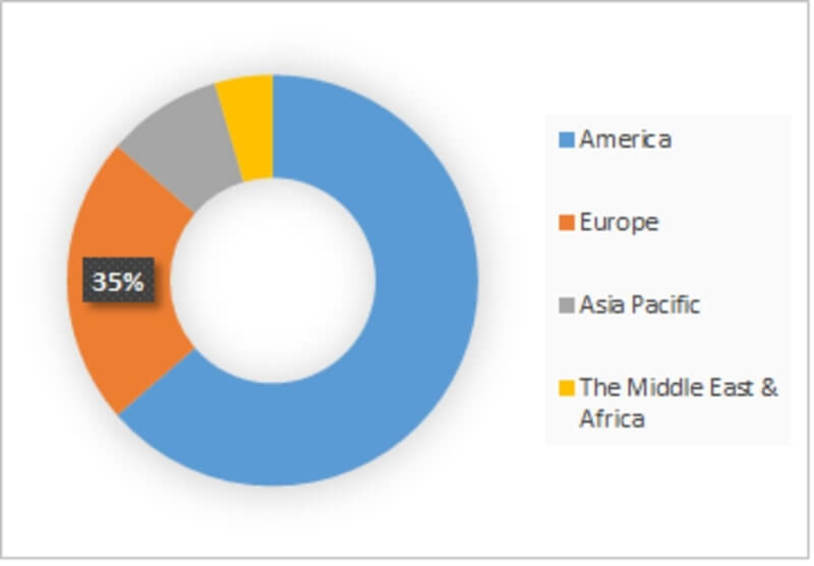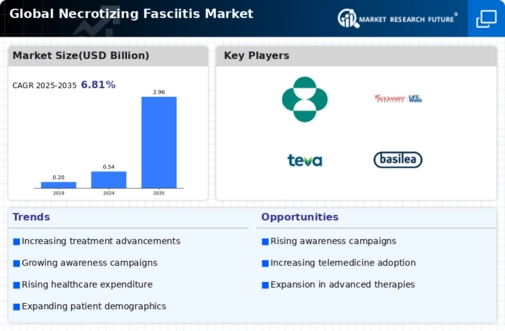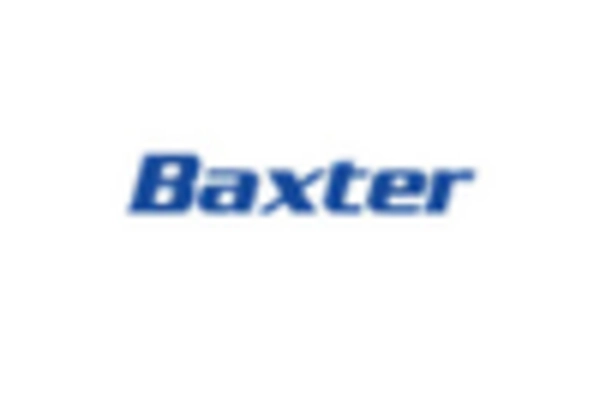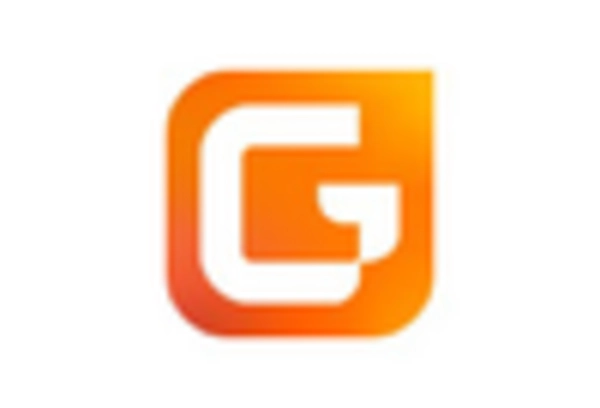Rising Incidence of Risk Factors
The Global Necrotizing Fasciitis Industry is witnessing growth driven by the rising incidence of risk factors associated with the condition. Factors such as diabetes, obesity, and immunocompromised states are becoming more prevalent in various populations. For example, the World Health Organization has reported an increase in diabetes prevalence, which is a significant risk factor for necrotizing fasciitis. As more individuals present with these underlying conditions, the likelihood of developing necrotizing fasciitis increases, thereby driving demand for treatment options. This trend suggests a potential increase in healthcare expenditures related to managing this severe infection, further propelling the market.
Increased Awareness and Education
In recent years, there has been a marked increase in awareness and education regarding necrotizing fasciitis, significantly impacting The Global Necrotizing Fasciitis Industry. Public health campaigns and educational initiatives by healthcare organizations are informing both the general public and healthcare professionals about the symptoms and urgency of treatment for this condition. This heightened awareness is leading to earlier diagnosis and intervention, which is critical for improving patient outcomes. As a result, the demand for effective treatment options is likely to rise, contributing to market growth. Additionally, healthcare providers are increasingly prioritizing training on recognizing and managing necrotizing fasciitis, further bolstering the industry.
Technological Advancements in Treatment
The Global Necrotizing Fasciitis Industry is experiencing a notable transformation due to rapid technological advancements in treatment methodologies. Innovations such as advanced imaging techniques, minimally invasive surgical procedures, and novel antibiotic therapies are enhancing patient outcomes. For instance, the introduction of real-time imaging allows for more precise surgical interventions, which is crucial in managing this life-threatening condition. Furthermore, the development of new antimicrobial agents is addressing the challenge of antibiotic resistance, which has been a significant concern in treating necrotizing fasciitis. As these technologies continue to evolve, they are likely to improve survival rates and reduce recovery times, thereby driving growth in the market.
Emerging Research and Development Initiatives
The Global Necrotizing Fasciitis Industry is benefiting from emerging research and development initiatives aimed at understanding and combating this severe infection. Ongoing studies are exploring novel therapeutic approaches, including immunotherapy and regenerative medicine, which may offer new hope for patients. Research institutions and pharmaceutical companies are increasingly collaborating to develop targeted therapies that address the unique challenges posed by necrotizing fasciitis. As these initiatives progress, they are likely to yield innovative treatment options that could significantly alter the landscape of care for affected individuals. This focus on R&D is expected to drive market growth as new therapies become available.
Growing Investment in Healthcare Infrastructure
Investment in healthcare infrastructure is a crucial driver for The Global Necrotizing Fasciitis Industry. Governments and private entities are increasingly allocating resources to enhance healthcare facilities, particularly in regions with high incidences of infectious diseases. Improved infrastructure facilitates better access to advanced medical technologies and specialized care, which is essential for the effective management of necrotizing fasciitis. Enhanced surgical facilities and intensive care units are vital for treating severe cases, and as these investments continue, they are likely to lead to improved patient outcomes. Consequently, this growth in healthcare infrastructure is expected to stimulate demand for necrotizing fasciitis treatments.


















Leave a Comment